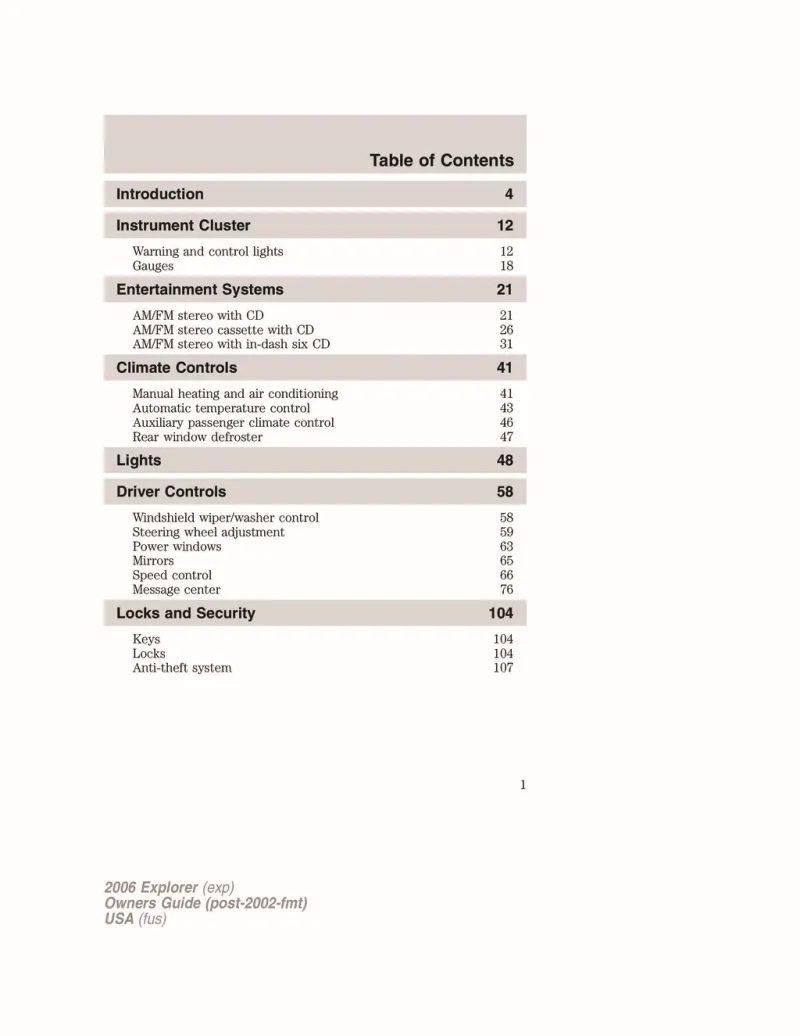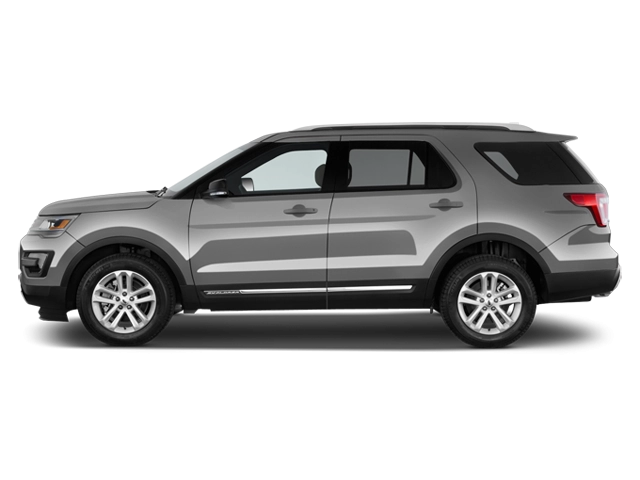2006 Ford Explorer Owner's Manual

Table of Contents
2006 Ford Explorer Overview
Introduction
The 2006 Ford Explorer embodies the rugged versatility and utility that define the SUV segment. With a strong legacy stretching back to its launch in 1990, the Explorer has garnered a loyal following thanks to its impressive combination of performance, spaciousness, and comfort. The 2006 model year continues this tradition, offering a range of features designed for both on-road and off-road adventures.
Powertrains
The 2006 Ford Explorer comes equipped with two capable powertrains that cater to varied driving needs. The standard engine is a 4.0-liter V6 that generates an impressive 210 horsepower, providing ample power for daily driving and light towing. For those seeking more performance, an optional 4.6-liter V8 engine is available, producing 292 horsepower and allowing for a higher towing capacity. Both engines are matched to a smooth 5-speed automatic transmission, with available four-wheel drive options to enhance traction on slippery or rugged terrains.
Trims
This model is offered in four distinct trims: XLS, XLT, Eddie Bauer, and Limited. The XLS serves as the base model, while the XLT adds more comfort and convenience features. The Eddie Bauer trim is a nod to adventure, with upgraded leather upholstery and unique styling cues. Lastly, the Limited trim caters to those wanting luxury in their SUV experience, featuring an array of advanced technology and premium materials.
Features
The 2006 Explorer boasts numerous features designed to enhance both safety and comfort. Standard equipment includes full-length curtain-side airbags, anti-lock brakes, and a robust audio system. Higher trims offer additional luxuries such as dual-zone climate control, a premium audio system, navigation, and leather seating. A rear-seat entertainment system is also available, making family trips enjoyable and less stressful.
Owner's Manual
The owner's manual for the 2006 Ford Explorer serves as a comprehensive guide for maintenance, operation, and troubleshooting. It provides essential information on vehicle features, safety instructions, and routine service recommendations. Following the guidelines in the manual helps ensure the longevity and reliability of this dependable SUV, making it a trusted companion for exploration.
User manual download
The Ford Explorer owner manual for the 2006 model year is to be found in PDF downloadable format on this page. The owner manual for the model year 2006 is free and in English, but the repair manuals are usually not easy to get and may cost more.
Manual Questions
Fill the form below and someone will help you!

